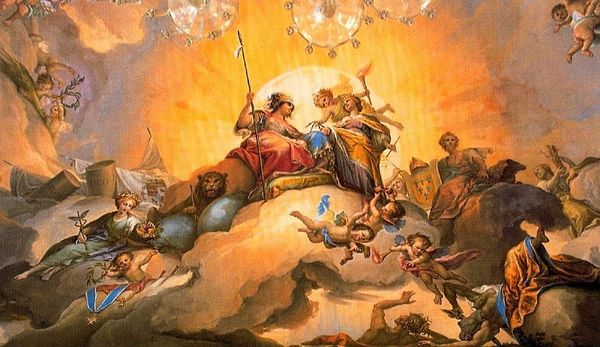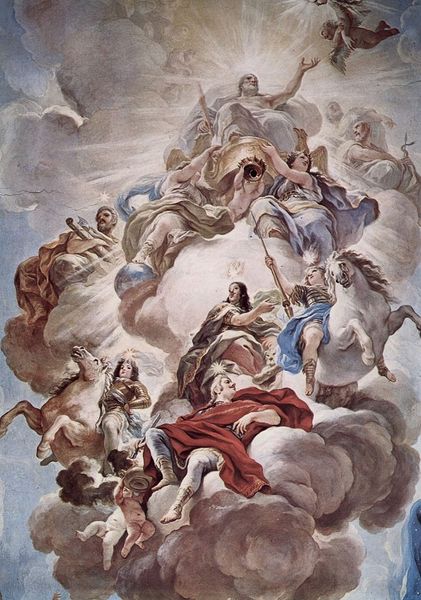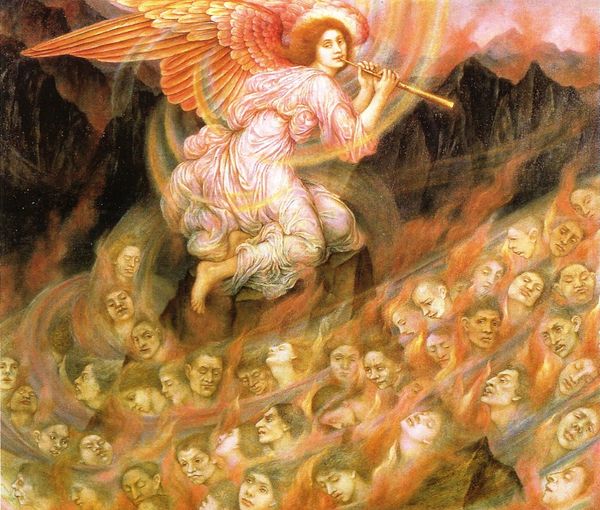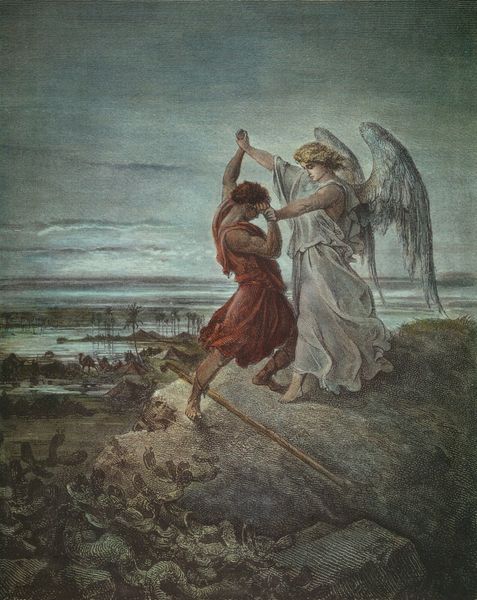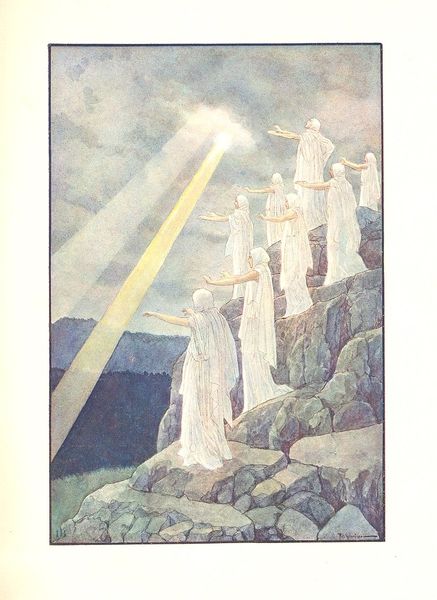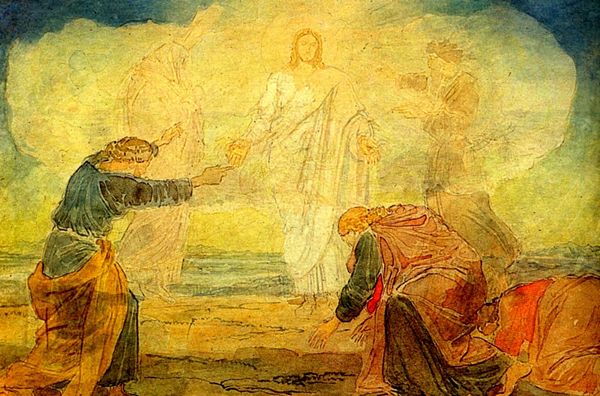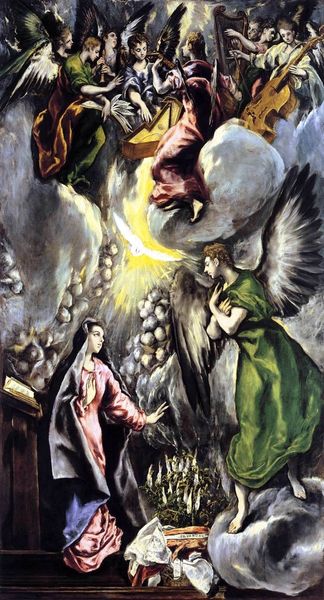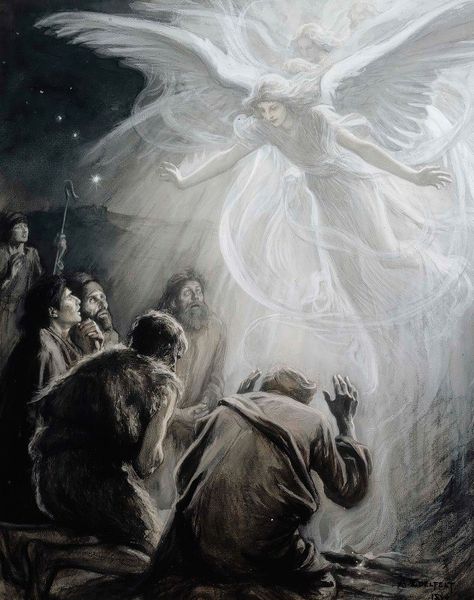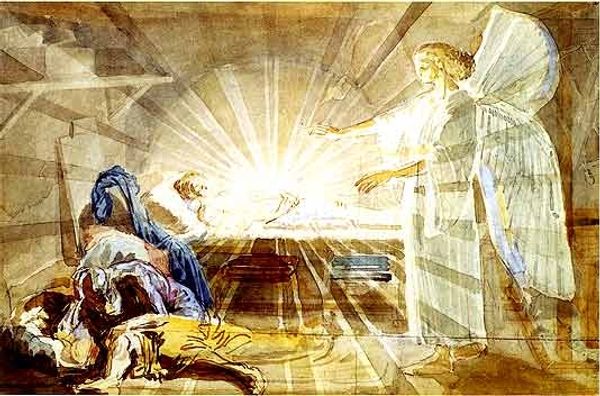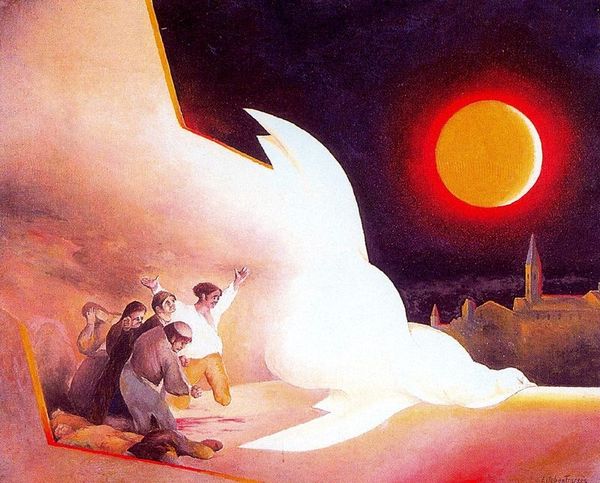
Dimensions: 113 x 167.6 cm
Copyright: Public domain
Editor: This is Arthur Hughes’s “Sir Galahad - the Quest of the Holy Grail,” painted in 1870 using oil paint. It has a dreamy, almost ethereal quality. What's your interpretation of the work? Curator: Hughes presents a quintessential scene from Arthurian legend, deeply entrenched in the Pre-Raphaelite movement's focus on medieval narratives. But let’s consider how the visual language reflects the Victorian era’s anxieties around faith and industrialization. Do you notice how Galahad is framed by both the natural world and this divine apparition? Editor: Yes, it’s like he is caught between two worlds. He has this divine vision above him, and all around this rugged terrain. Curator: Exactly. The romanticized vision of nature served as a critique of the increasingly urban and industrialized landscape. The ethereal figures could represent a longing for spiritual certainty in a rapidly changing society. Also, what do you think about the portrayal of Galahad himself, and what he stands for? Editor: He’s often seen as the purest of the knights, so is the painting commenting on the attainability of purity or perhaps critiquing societal expectations of men at the time? Curator: Precisely! Hughes might be subtly challenging the very notion of idealized masculinity. Galahad’s quest, while noble, places him in a position of isolation. The painting opens a space for us to think about the social pressures placed on individuals to conform to impossible standards and whether those standards are inherently exclusionary. Editor: That gives me a lot to think about. I saw this painting as just another telling of a myth, but I now see it's connected to its time. Curator: Art provides a mirror to society, reflecting its hopes, fears, and unspoken tensions. This definitely allows the viewers to look for connections between art history and theory and intersectional narratives.
Comments
No comments
Be the first to comment and join the conversation on the ultimate creative platform.


